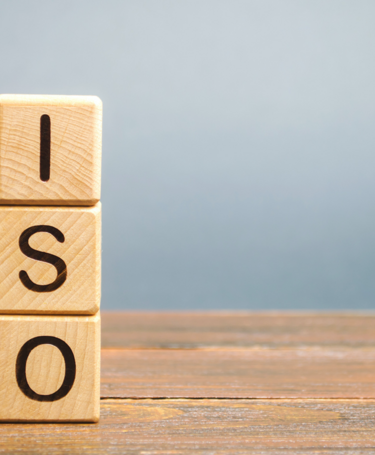
A future direction for quality management standards

Richard Green, CQP FCQI, Managing Director of Kingsford Consultancy Services, UK, provides information on the updates the quality profession could expect to see in the 9000 and 10000 series of quality standards.
On Monday 4 May, the ISO Quality Management and Quality Assurance Committee (TC/176) circulated its TC176 future concepts discussions paper, which provides some clues as to the sort of content we can expect to see included in the Committee’s standards going forwards. This is important as TC 176’s three subcommittees oversee the 9000 and 10000 series of standards, including some of the world’s most popular ones such as ISO 9001 – Quality management systems – Requirements, and ISO 9004 – Quality management — Quality of an organisation — Guidance to achieve sustained success.
The origins of this project can be traced back to September 2017, when TC/176 held a workshop which focused on identifying trends in the global environment with the potential to impact quality, quality management, and/or quality management systems. The output from this workshop was then passed across to a newly created TC/176 Task Force (TF4) who were established to develop guidance for ISO/TC 176 standard writers in order to ensure that these considerations were not overlooked.
Although TC/176 standard writers do not have to include requirements relating to these ‘future concepts’ in the next editions of their quality management standards, it is hard to believe that they will not be included given the investment made in defining and articulating these concepts.
The eight future concepts, which have been identified by TF4 in priority order in their draft, are:
- Customer experience
- People aspects
- Change management
- Integration
- Knowledge management
- Emerging technologies
- Ethics and integrity
- Organizational culture
Customer experience. Customer experience is the sum of all perceptions, impressions and reactions that a customer has in a series of activities. It involves everything from initially discovering and researching a product or service, through shopping, purchasing and using the product or service to following up with the brand afterwards.
People aspects. People aspects are all the factors that impact people’s abilities to perform tasks, their interests (eg motivation and preferences), their differences and relations (individual differences and social behaviour), and how an organisation can enhance performance by getting the best from people.
Change management. Change management is identified as a systematic approach to initiate, develop, implement and communicate a transition or transformation in an organisation’s identity elements. These elements include the organisation’s vision, mission, culture, values, policy, strategy, objectives and/or processes.
Integration. An integrated management system (IMS) integrates many systems and processes into one complete framework, enabling an organisation to work as a single unit with unified objectives. When an organisation integrates management systems it can achieve better alignment between its systems, strategic direction, objectives, and the context of the organisation.
Knowledge management. Knowledge management is a discipline focused on ways that organisations create and use knowledge. While this concept itself is not new, there are important aspects that now need to be considered in relation to the use of, for example, big data, machine learning, blockchain, code of ethics, copyrights and intellectual property.
Emerging technologies. There are a number of emerging technologies that will impact an organisation’s QMS in the future. The extent of digitisation is constantly growing in organisations. There are many possibilities for companies to use intelligent networking and artificial intelligence (AI) for making decisions based on rapidly changing data.
Ethics and integrity. Ethics and integrity are critical to the organisation’s ability to achieve sustainable success. All company decisions, actions and stakeholder interactions must be aligned with its moral and professional principles of conduct. These principles should support all applicable laws and regulations and are the foundation for the organisation’s culture, values and attitudes.
Organisational culture. Organisational culture refers to the collective beliefs, values, attitudes, manners, customs and behaviours that are unique to an organisation. Leadership establishes the organisational identity through the culture it develops and promotes.
Structure of the draft
The main body of the TF4 draft document is given over to a detailed exploration of each of the eight future concepts, based on the structure below:
- A detailed explanation of the concept.
- An explanation as to why the concept is important from a quality perspective.
- Identification of affected relevant interested parties.
- Provision of a summary of the potential application and impacts of each concept for each TC/176 subcommittee.
- Identification of the benefits of addressing the future concept for each subcommittee.
- Identification of any reference sources used in articulating the future concept.
- Provision of links to further information relating to the future concept.
In order to clarify the above, a practical example is provided, which details the contents of the customer experience section of the draft.
Customer experience
At the highest level, we are advised that “customer experience is the sum of all perceptions, impressions and reactions that a customer has in a series of activities.” It involves everything from initially discovering and researching a product or service, through shopping, purchasing and using the product or service to following up with the brand afterwards.
This is then expanded on through a series of subsequent paragraphs, which further explains what the concept of customer experience embraces.
Following this, the draft then sets out why customer experience is important. We are advised:
- It is key to improving customer satisfaction.
- It differentiates an organisation’s products and services from other organisations.
- It generates customer loyalty.
- It builds trust and personal relationships.
- It increases customer advocacy and referrals.
Next, the appropriate relevant interested parties are identified. It should come as no surprise that for customer experience the key stakeholders are customers. It is also recognised that because customer experience impacts loyalty, it can also affect business partners, suppliers and shareholders.
The next section is perhaps the most significant in terms of identifying exactly what we might see in future editions of our standards, as it provides a summary of how customer experience could be incorporated by TC/176 standard developers into each of their standards.
TF4 notes the following:
- ISO 9000 – Clause 2.3.1 – Customer focus – may need to be expanded to include customer experience.
- ISO 9000 Clause three – Terms and Definitions – a new definition of ‘customer experience’ could be included along with a review of the existing definitions of customer satisfaction and customer service.
- ISO 9001 – The current limited focus on compliance is not sufficient to lead to high customer satisfaction and delight or the sustained success of the organisation, as it does not take into account the full breadth of customer experience or aim to enhance this.
- ISO 9004 – ISO 9004 has already adopted the concept “customer experience” but there are opportunities for including more specific recommendations that focus on the management of the interactions between the organisation and the customer/other relevant interested parties.
- ISO 10001, 10002, 10003, 10004, 10008 – Consider adding customer experience at next revision.
The perceived benefits of making these changes are then detailed for each subcommittee. Each section then ends with the identification of any reference sources used, plus hyperlinks to further information. This structure is then repeated for each of the other seven future concepts.
Potential changes
Annex A to the draft document also provides some clues as to the changes we might expect. It is here where all of the TC/176’s 9000 and 10000 series standards are cross-referenced against the eight future concepts. ISO 9001, for example, is matched to all eight future concepts suggesting that TF4 has seen an opportunity for requirements relating to each to be incorporated into the standard. ISO 9004, on the other hand, is linked to future concepts: one, two, three, six, seven and eight, which suggests that TF4 do not see the need for Integration or Knowledge Management to be addressed in this particular standard.
With work due to start on creating the next edition of ISO 9001 shortly, it will be interesting to see how many of the future concepts are actually incorporated into the Standard by the time it is eventually published.
On the one hand, if ISO follows its general rule of a major revision followed by a minor revision, the next edition should only contain minor changes. However, having conducted the future concepts work, is it really likely that ISO will want to ‘park’ this for the best part of the next 10 years? For now, we will have to wait and see.
For more related content on ISO standards, visit: quality.org/content/technical-resources